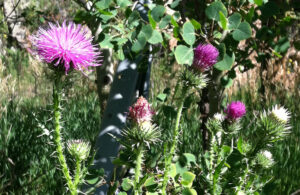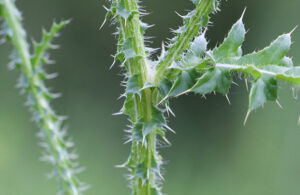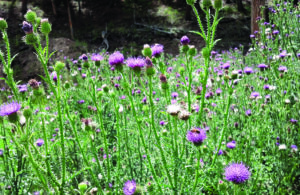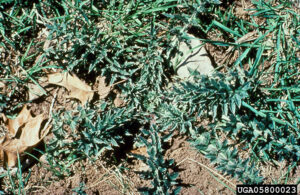Plumeless Thistle
Plumeless Thistle
Carduus Acanthoides
Plumeless thistle is a List B member of the Sunflower family (Asteraceae). It is a biennial or sometimes a short-lived perennial.
Flowers are reddish-purple, ½-1 inch wide. The bracts are narrow and tipped with a spine. Flowers are present June to September and grow singly or in small groups at the tips of branched stems.
Plumeless thistle reproduces by seed. The seeds lack a pappus.
Plants have taproots and can grow to 8 feet tall. Stems are winged and branch towards the ends. Leaves are dark green with a lighter midrib. The undersides of the leaves are hairy.
Rosettes form in the first year and bolt early in May to June of the next year. The rosette leaves are deeply lobed and spiney.
Plumeless thistle is found in disturbed areas, such as overgrazed pastures, rangelands, roadsides, and rights-of-way.
Originally from Eurasia, it has been known in the northeast US since 1837 and in Colorado since the mid-1950s.
MN Dept. of Agriculture
https://www.mda.state.mn.us/plants/pestmanagement/weedcontrol/noxiouslist/plumelessthistle
WASHINGTON STATE Noxious Weed Control Board
https://www.nwcb.wa.gov/weeds/plumeless-thistle
Photo Credits
Rosette – Loke T. Kok, Virginia Polytechnic Institute and State University, Bugwood.org
Stem – Steven Katovich, Bugwood.org
All others: Jeffco Invasive Species Management





